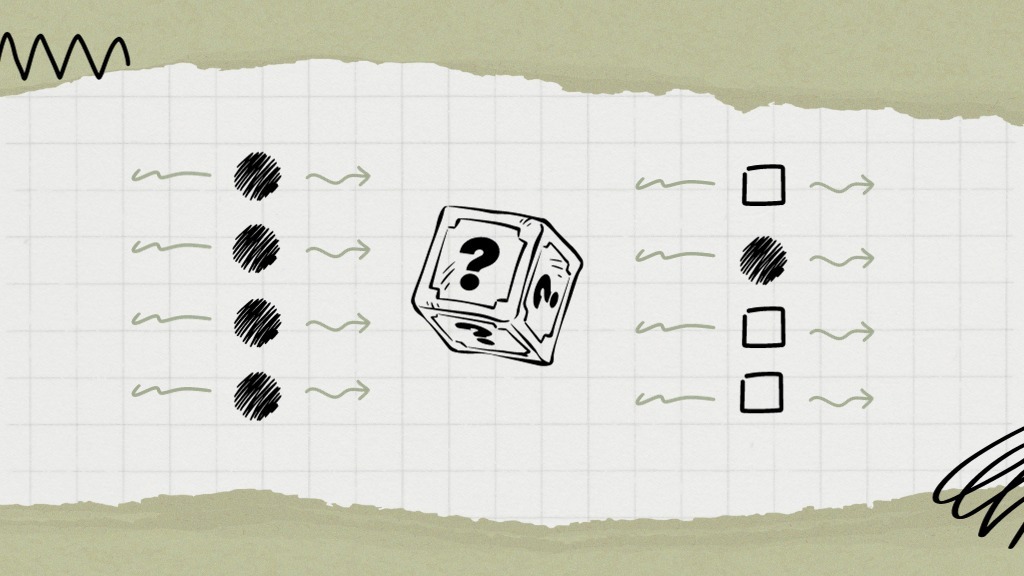Photons, the tiny particles of light, are the natural carriers of information. Whatever architecture we choose to create a quantum computer, there is no escape: photons must be involved sooner or later. As photons journey through optical fibers and other optical components, each photon carries a risk of getting absorbed by the material it encounters.
Photon loss represents a significant problem in information technologies, particularly in fields such as fiber optics, quantum computing, and quantum information. It reduces signal strength, increases error rates, and represents a security risk in quantum communication and cryptography. However, there is no reason to panic, our engineers at Quandela have found an effective method to mitigate information loss in photonic quantum computers. But before we explain how our approach works, let us dive into how photon loss affects calculations.
Imagine a mysterious box that answers your questions
In traditional computers, information is encoded as a series of ones and zeros, where a one means something is true, and a zero means it is false. Quantum computers use this binary language too, but with a twist that allows them to tackle problems that would leave ordinary computers scratching their digital heads.
When you send a question to a quantum computer, it doesn’t always give you a straightforward answer like your typical calculator. Instead, it offers a range of possible answers, each with its own chance of being right. You can think of this as rolling a loaded die, where some numbers have a higher chance of coming up.
Now, let us say you ask the quantum computer,” What’s 2+5?” If you ask this question repeatedly, you might initially get a mix of answers. While it might seem puzzling at first, here is the intriguing part: the more times you ask the same question, the more likely you are to get the correct answer.

In essence, every possible answer has its own probability of showing up, but the correct answer has the highest chance of making an appearance. To unlock the true power of a quantum computer, you need to ask it the same question repeatedly to determine the likelihood of each answer.
Now, imagine a quantum device as a mysterious box—let us call it a quantum box—where we use photons to encode information. The way our photons leave the source to enter the quantum box represents our questions, and the way they emerge from the quantum box gives us answers.
The problem is that the more photons we send into our quantum box, the higher the chance that some of them get absorbed by the components in the box and disappear. To illustrate this, imagine we send five photons, and each of them has a 60% chance of being lost. The probability that all five photons emerge unscathed on the other side is (1−0.6)5, which amounts to just 1%.

As you can see, this probability shrinks even further as we send more photons on their quantum adventure. Let us see how we can tackle this problem.
Post-selection, A Common Strategy
Imagine you are on a treasure hunt for answers, and you decide to play it safe. Thus, you throw away every output where at least one of your precious photons gets lost. In our example, with five photons and a 60% chance of each being lost, you would need to make around a hundred measurements on average just to obtain one usable outcome. As we discussed earlier, quantum computers require numerous outcomes to estimate the probability distribution accurately. So, you must ask the computer the same question a hundred times to achieve the same level of accuracy. This approach is named ”post-selection” because you cherry-pick the outcomes based on how many photons successfully exit the quantum box. It is a common strategy already in use, but it limits the complexity of our calculations.

Figure 3. Cherry-pick the outcomes based on how many photons successfully exit the quantum box.
Now, let us flip the script and consider a different strategy. Instead of tossing out measurements with lost photons, you opt to extract valuable information from incomplete measurements. It is like turning a partially completed puzzle into a masterpiece. This method provides a more precise estimate of the probability distribution for answers without requiring you to interrogate the quantum computer as frequently as you would with post-selection. But how does photon recycling work its magic and extract information from these incomplete measurements? Let us delve into this innovative strategy.
Photon Recycling: Extracting Treasure from Incomplete Measurements
Photon Recycling allows us to extract valuable information from measurements even when some of our photons have gone astray. The trick is to take good and bad outcomes into account to reconstruct the right answer and classify the outcomes into true and faulty. We label the outcome as faulty if at least one photon has been lost, and true if no photon has been lost. To make sense of measurements that include lost photons, we embark on a quest to uncover the probabilities associated with a particular true outcome.
The approach consists in considering each faulty outcome separately and reclassifying them according to the number of lost photons. Then we consider the faulty outcomes that could have morphed into a specific true outcome when a given number of photons got lost. For example, let us consider a faulty outcome where only one photon is missing. Thus, we calculate all the probabilities of the faulty outcomes which could have been our desired true outcome if the one lost photon had stayed on track. By adding up all these probabilities, we get closer to the probability of our sought-after true outcome.
In essence, we are collecting clues from the past, each clue being like a piece of a jigsaw puzzle, but where some pieces are blurred. With these jigsaw puzzle pieces, we are determined to reconstruct the full picture; we call it the ultimate solution. This method of estimating the answer improves when you consider a greater number of faulty outcomes compared to relying solely on the true outcomes. In other words, Photon Recycling takes advantage of the finding that a lot of blurred pieces accompanying the clear pieces are better than just considering a few clear pieces.

Figure 4. Completing a puzzle using good pieces and “blurry pieces”: photon recycling.
This unique insight highlights that recycling some of our outcomes is a better method to address photon loss compared to the post-selection approach. Yes, we still discard some outcomes, but far fewer than in the post-selection process.
Quandela’s photon recycling technique empowers us to extract information that would otherwise be lost, enhancing the utility of photonic quantum computing.
References
James Mills, Rawad Mezher. (2024). Mitigating photon loss in linear optical quantum circuits: classical postprocessing methods outperforming postselection. Available in: https://arxiv.org/abs/2405.02278
Would you like to program a quantum computer: register on our Quandela Cloud and start for free!
Illustrations: Elina Kostanian


